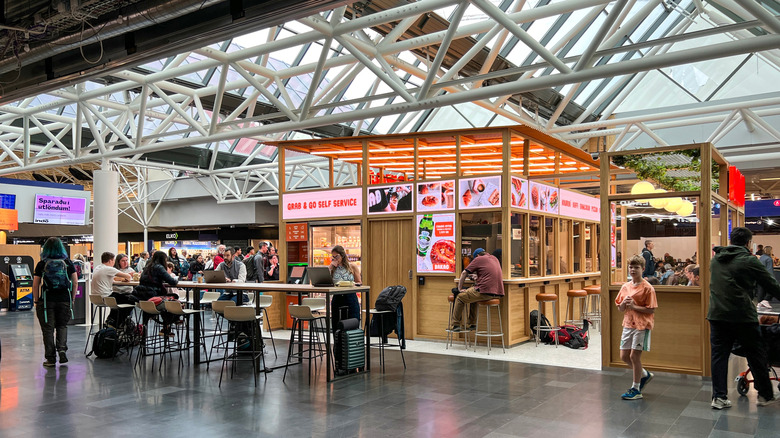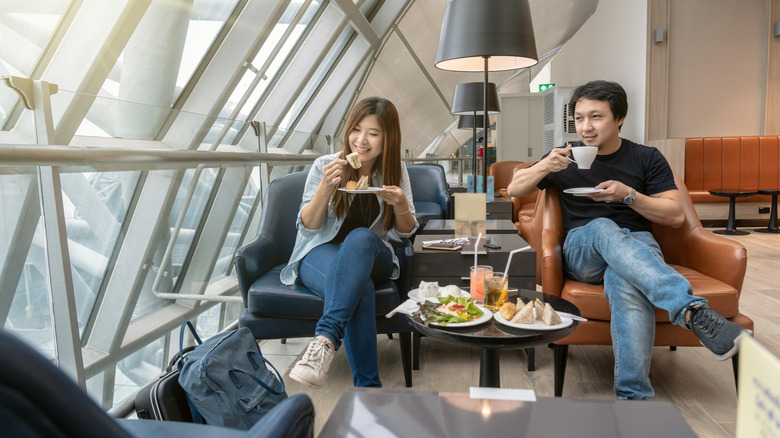Why Is Food So Much More Expensive In Airports?
We at the Takeout are not against putting down our hard-earned money for truly fine dining. When you're receiving excellent service, eating exquisite meals made with seasonal ingredients, and ensconced in an atmospheric setting, it feels okay to fork over the cash for an elegant evening out on the town. Where we draw the line, however, is shelling out $20 for a flat beer at a sad, fluorescent-lit bar near Terminal A. Unfortunately, it seems like just about everything is expensive at the airport, and even the best airport food is among the most inflated in price.
We know that when we eat at the airport, we're not paying for an amazing experience or quality ingredients most of the time. But why the Michelin-esque price tags? It comes down to a combination of higher rents, logistical hurdles, and a captive audience (us, unfortunately). While it can often seem like the sky-high price for a bottle of water is determined by some evil corporate middleman, with no one regulating anything, airports do actually have price policies and controls.
It's simply expensive to own and operate a business inside the weird twilight zone that is an airport. Rent is always a mitigating factor for restaurants, and just like anywhere else, the better the location, the higher the rent. Because airports are such a prime location with limited competition, they can and will charge a premium rent to operate in these high-traffic areas.
The price of convenience
But the high rent is just the beginning. Most businesses also have to pay a percentage of their sales as concessions fees to airport authority. Additionally, the logistics and supply chain challenges pose their own problems. Think about how difficult it can be getting through security as a passenger. Now imagine you're a truck driver delivering fifty crates of bottled waters and chips. And once the goods are at the airport, there's limited storage space, so deliveries are much more frequent and much less cost-effective. There's also the annoying matter of airport-specific regulations, which requires vendors to comply with certain rules for safety and security.
And if all of that wasn't hard enough, it's also difficult to find long-term staffing. Airport restaurants often have high turnover because employees must work long hours in a secured environment while also dealing with the hassle of specialized security clearances on their way in and out. And as anyone who's taken Econ 101 knows, good ol' supply and demand can also dictate the price of your Starbucks venti latte. Airports control the number of vendors so there's less competition, and therefore fewer restaurants to undercut prices.
Finally, there's us, the captive audience, trapped in a bustling hub miles from anywhere else, and frantic for food, drink, and entertainment. Vendors know we're desperate, and with the stress of delayed flights and missed connections to worry about. They also know we'll be ponying up a lot of cash for that airport beer — like the $27 Sam Adams lager that sparked an airport food price audit — no matter how overpriced it is.

